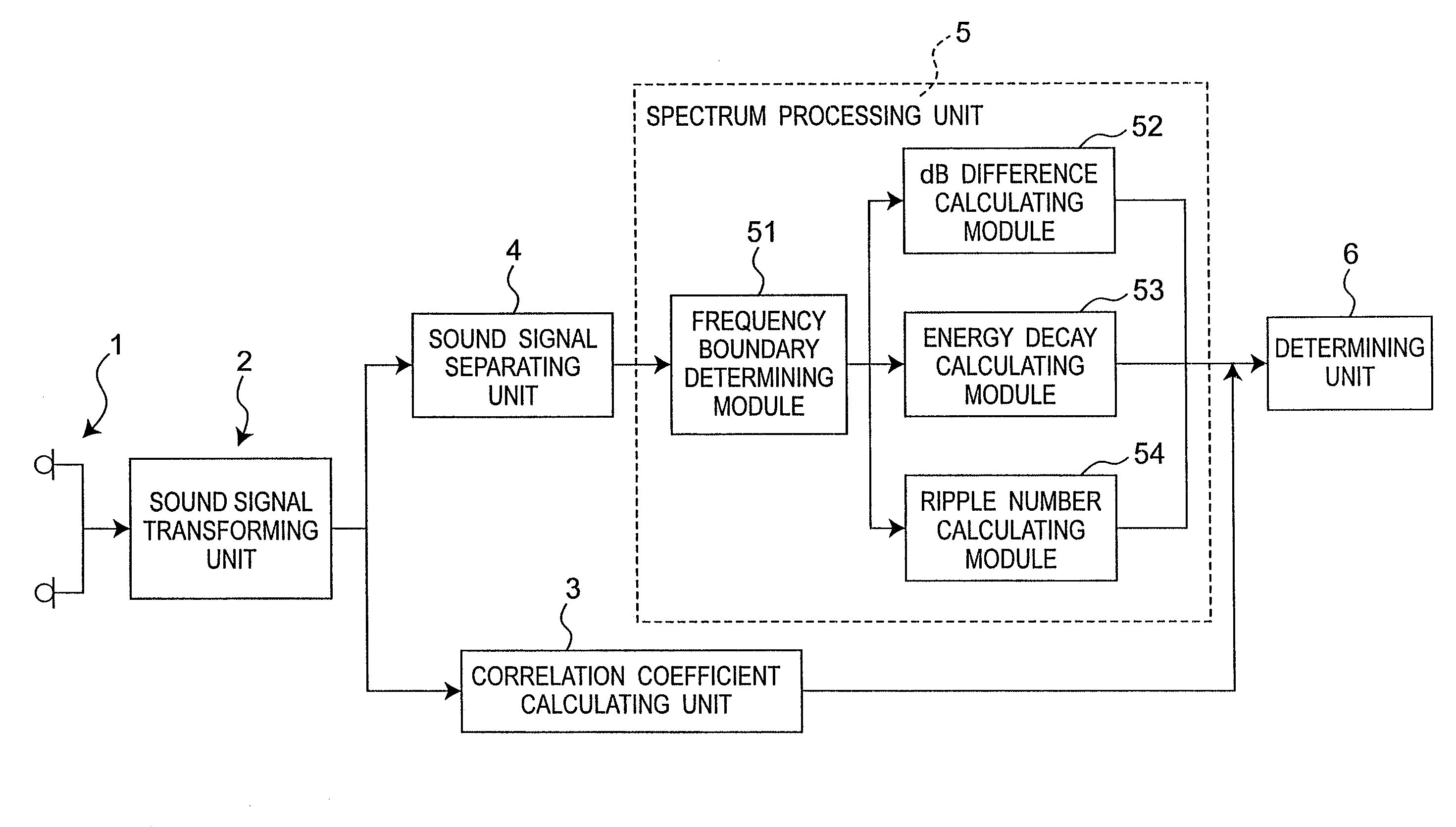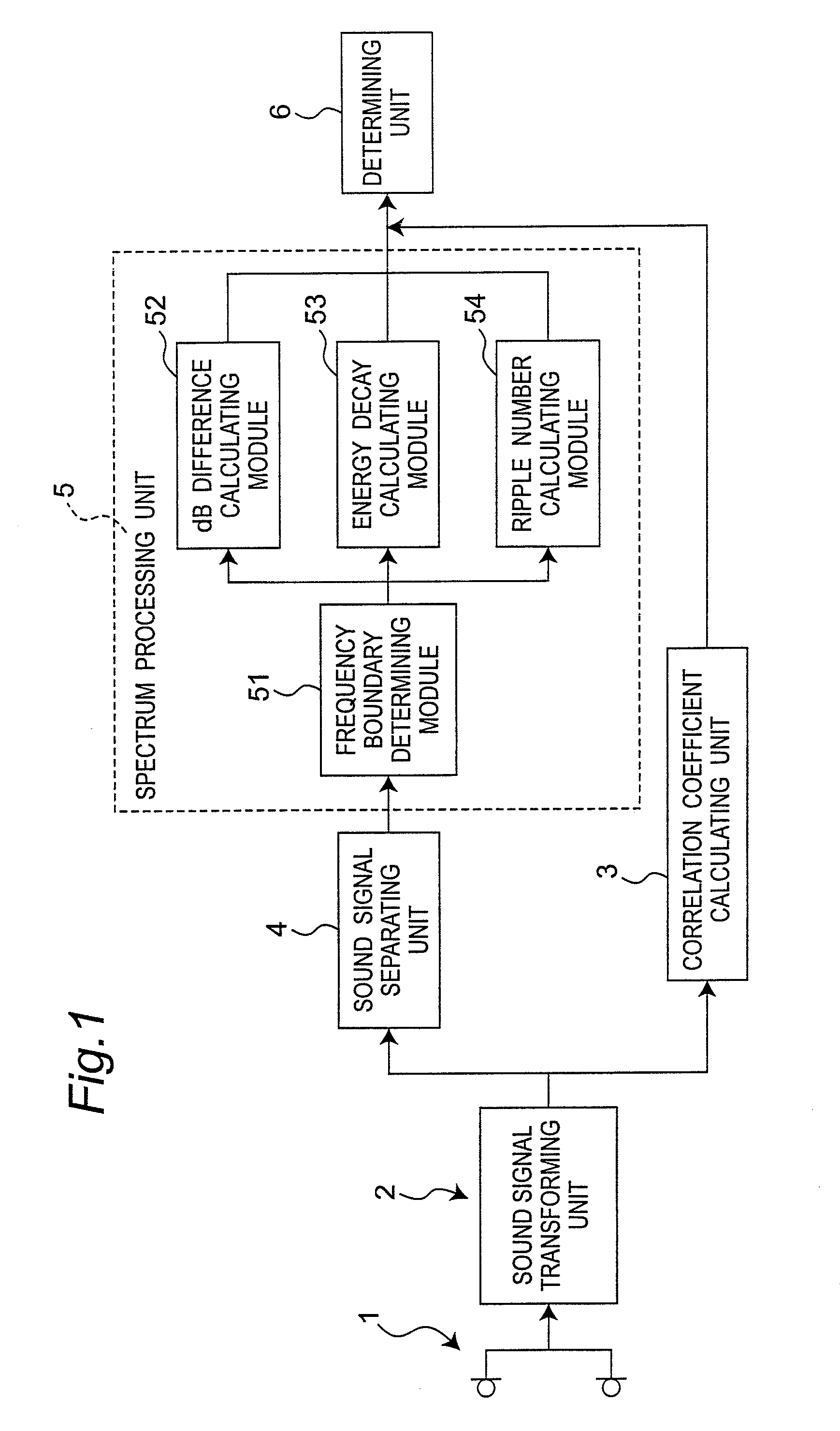Method and system for detecting wind noise
- Summary
- Abstract
- Description
- Claims
- Application Information
AI Technical Summary
Benefits of technology
Problems solved by technology
Method used
Image
Examples
Embodiment Construction
[0020]Referring to FIG. 1, the preferred embodiment of a system for detecting wind noise according to the present invention is adapted to determine whether two sound signals of a plurality of sound signals acquired by a plurality of sound receiving units 1 include wind noise. In this preferred embodiment, the number of the sound receiving units 1 is two and therefore, two sound signals will be acquired. The system includes a sound signal transforming unit 2, a correlation coefficient calculating unit 3, a sound signal separating unit 4, a spectrum processing unit 5, and a determining unit 6.
[0021]The sound signal transforming unit 2 is electrically connected to the sound receiving units 1 to receive the two sound signals and to transform the same to their corresponding digitized sound signals including a plurality of sound frames.
[0022]The correlation coefficient calculating unit 3 is electrically connected to the sound signal transforming unit 2. The purpose of the correlation coef...
PUM
 Login to View More
Login to View More Abstract
Description
Claims
Application Information
 Login to View More
Login to View More - R&D
- Intellectual Property
- Life Sciences
- Materials
- Tech Scout
- Unparalleled Data Quality
- Higher Quality Content
- 60% Fewer Hallucinations
Browse by: Latest US Patents, China's latest patents, Technical Efficacy Thesaurus, Application Domain, Technology Topic, Popular Technical Reports.
© 2025 PatSnap. All rights reserved.Legal|Privacy policy|Modern Slavery Act Transparency Statement|Sitemap|About US| Contact US: help@patsnap.com



